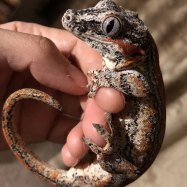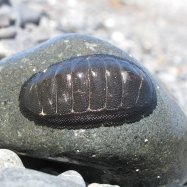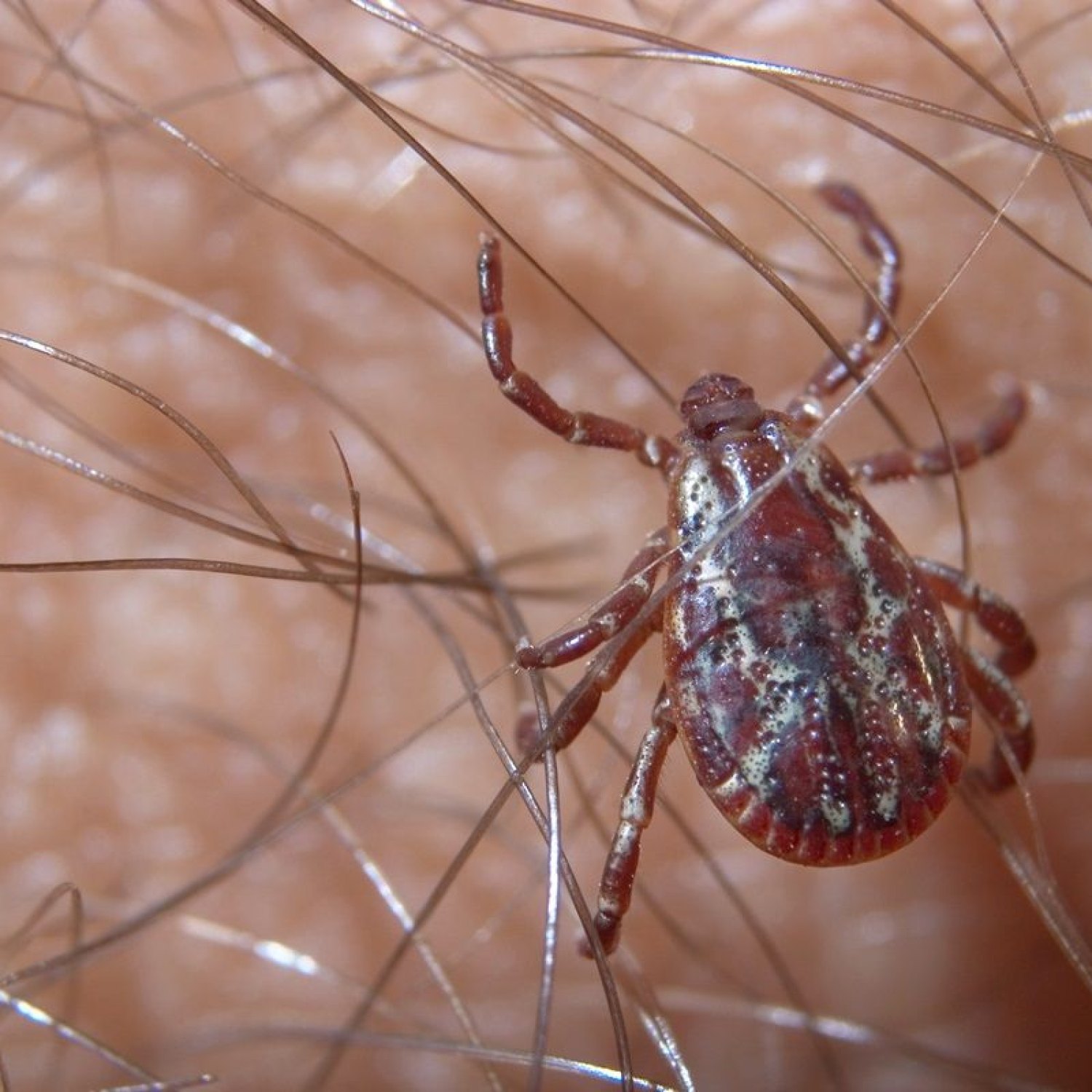
American Dog Tick
3 to 5 mm
American Dog Ticks are common blood-sucking parasites found throughout North America. These tiny creatures, also known as wood ticks, can grow up to 5mm in length and belong to the Ixodidae family. They have a flat and oval body shape and can transmit diseases to both humans and animals. Keep yourself and your pets safe by checking for ticks after being outdoors and using appropriate prevention methods.
Animal Details Summary:
Common Name: American Dog Tick
Kingdom: Animalia
Habitat: Grassy fields, meadows, urban areas
The Amazing American Dog Tick: A Common But Noteworthy Parasitic Arachnid
The American Dog Tick, scientifically known as Dermacentor variabilis, is a common but fascinating parasitic arachnid found throughout North America. Known by its scientific and common name, this tick belongs to the animal kingdom, phylum Arthropoda and class Arachnida. It is a member of the order Ixodida, the family Ixodidae, and shares its habitat with other ticks and mites in these families.Despite its unassuming size, ranging from 3 to 5 mm in length, the American Dog Tick has a rich and unique history, along with many noteworthy features that make it stand out among other arachnids American Dog Tick. In this article, we will explore the various aspects of this incredible creature and gain a better understanding of its characteristics, behavior, and importance in the ecological balance.
Familiar Yet Remarkable
The American Dog Tick, also known as the eastern, wood, or ground tick, is a familiar sight to many pet owners and outdoor enthusiasts. It is one of the most common ticks found in North America, with a distribution that spans across the United States and into Canada. As its name suggests, this tick is often found on domestic dogs, but it also feeds on a variety of wild and domestic animals, including cattle, deer, rats, and even humans.One of the most distinctive features of the American Dog Tick is its coloration. Its body is dark reddish-brown with grayish-white markings, giving it a striking appearance that is hard to miss. This coloration also makes it easier to identify and distinguish from other tick species. However, its small size, coupled with its tendency to hide in hard-to-reach areas, can make it challenging to spot, making tick checks a crucial part of pet and personal hygiene.
A Parasite with a Purpose
Like all ticks, the American Dog Tick is a parasitic creature, meaning it feeds on the blood of its host to survive Arafura File Snake. It is an ectoparasite, which means that it attaches itself to the external surface of its host. However, contrary to popular belief, these ticks do not feed exclusively on dogs. They are opportunistic feeders, meaning they will feed on any warm-blooded animal that comes in contact with them.The American Dog Tick has a complex life cycle that includes four stages: egg, larva, nymph, and adult. The larval and nymphal stages usually feed on smaller animals such as rodents, while the adult females prefer to feed on larger hosts such as dogs, deer, and humans. This feeding method has led to the American Dog Tick's role in the transmission of diseases, making it a significant public health concern.
A Widespread and Adaptable Habitat
The American Dog Tick is a hardy and adaptable creature, which is evident from its diverse range of habitats. It is most commonly found in grassy fields, meadows, and woodlands but has also adapted to urban areas, making it a potential threat to both pets and humans in these areas. Due to its wide distribution, it has been recorded in all of the continental United States and southern Canada, making it one of the most widespread tick species in North America.The American Dog Tick is not only versatile in its habitat but also in its survival techniques. It can survive harsh weather conditions and can go months without feeding, making it resilient and challenging to eliminate from an infested area. Its adaptability and widespread distribution make it a crucial species for researchers and scientists to study and understand better.
A Fascinating Body Shape and Structure
The American Dog Tick's body shape is another unique feature that sets it apart from other ticks. Unlike the more prominent and round-bodied ticks, this species has a flat and oval-shaped body. Its body is divided into two parts, the anterior capitulum, which contains the mouthparts, and the posterior scutum, which covers most of its back.This arachnid also has eight legs with hooked claws that help it cling onto its host. The legs are also equipped with sensory organs that aid in the tick's perception and detection of potential hosts. Its body is covered with tiny hairs to help it navigate through the host's fur or feathers and find a suitable feeding site.
Difficult to Detect, but Not Insignificant
Although the American Dog Tick may seem small and unassuming, it should not be underestimated. This species has a considerable impact on both animal and human health. It is a vector for several diseases, including Rocky Mountain spotted fever, tularemia, and anaplasmosis. It is also known to cause tick paralysis, a potentially life-threatening condition caused by a neurotoxin injected by the tick into its host.Moreover, the American Dog Tick can significantly affect livestock production by transmitting diseases to cattle, pigs, and other domesticated animals. Its parasitic nature can also cause significant financial losses to farmers and ranchers. This parasite is a growing concern, and researchers and scientists are working tirelessly to develop more efficient ways to control and prevent its spread.
The American Dog Tick and Human-Wildlife Interactions
The American Dog Tick has a crucial role in maintaining the ecological balance in North America. It is a significant food source for small animals such as birds, lizards, spiders, and other arachnids. It is also a crucial host for parasitic wasps, which control its population and reduce the tick's negative impact.However, as with any species, this tick's increasing population can have adverse effects on the environment and its inhabitants. Human-wildlife interactions, such as urbanization, deforestation, and climate change, have contributed to the tick's spread and could potentially lead to a spike in tick-borne diseases. It is crucial to find a balance between human activities and wildlife preservation to prevent further disturbances in the ecosystem.
Conclusion: A Tiny But Essential Creature
In conclusion, the American Dog Tick may seem like a small and insignificant creature, but it plays a vital role in North America's ecology. Its unique characteristics, yet common appearance, make it a fascinating species to study and understand. Its adaptability, widespread distribution, and potential for disease transmission make it a significant public health concern.As responsible pet owners and outdoor enthusiasts, it is crucial to take precautions to protect ourselves and our furry companions from this tiny but potentially dangerous tick. Regular tick checks, proper grooming, and the use of preventative measures, such as tick repellents, are essential in reducing the risks of tick-borne diseases. Together, we can coexist with this remarkable but potentially harmful parasitic arachnid and maintain a healthy balance in nature.

American Dog Tick
Animal Details American Dog Tick - Scientific Name: Dermacentor variabilis
- Category: Animals A
- Scientific Name: Dermacentor variabilis
- Common Name: American Dog Tick
- Kingdom: Animalia
- Phylum: Arthropoda
- Class: Arachnida
- Order: Ixodida
- Family: Ixodidae
- Habitat: Grassy fields, meadows, urban areas
- Feeding Method: Parasitic
- Geographical Distribution: North America
- Country of Origin: United States
- Location: Throughout North America
- Animal Coloration: Dark reddish-brown with grayish-white markings
- Body Shape: Flat and oval
- Length: 3 to 5 mm
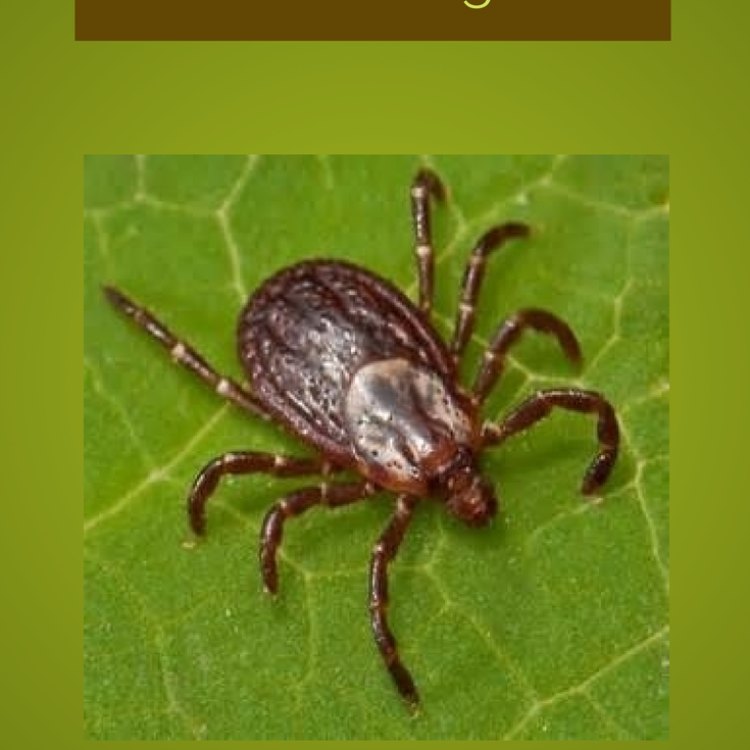
American Dog Tick
- Adult Size: Approximately 5 mm
- Average Lifespan: 2 years
- Reproduction: Sexual
- Reproductive Behavior: Mating occurs on the host
- Sound or Call: N/A
- Migration Pattern: Non-migratory
- Social Groups: Solitary
- Behavior: Questing behavior to find a host
- Threats: Can transmit diseases like Lyme disease and Rocky Mountain spotted fever
- Conservation Status: Not evaluated
- Impact on Ecosystem: None significant
- Human Use: None
- Distinctive Features: Visible in all life stages, females have a large silver spot on their back
- Interesting Facts: American Dog Ticks are the most commonly encountered ticks in the United States
- Predator: Various predators, including birds, reptiles, and mammals
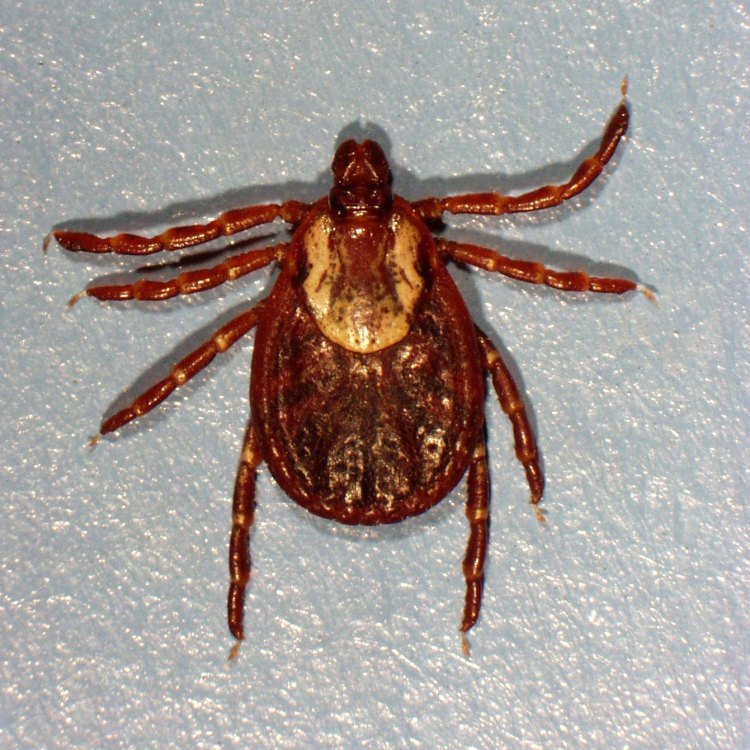
Dermacentor variabilis
The Fascinating World of American Dog Ticks: Small But Mighty
When you think of ticks, what comes to mind? Perhaps you picture a small, blood-sucking pest that can transmit diseases to humans and animals. While this is certainly true, there is much more to ticks than meets the eye. In this article, we will delve into the unique world of American Dog Ticks, exploring their characteristics, behavior, and impact on both humans and the ecosystem.Adult American Dog Ticks are approximately 5 mm in size, making them relatively small in comparison to other tick species PeaceOfAnimals.Com. However, do not let their size fool you. These tiny creatures are known for their ability to survive in various environments and their potential to transmit diseases to unsuspecting hosts.
With an average lifespan of 2 years, American Dog Ticks have a shorter lifespan compared to other tick species. Yet, within those two years, they can cause significant harm to both humans and animals. And they do so in a very unique way - through sexual reproduction.
Mating for American Dog Ticks occurs on their hosts, making their reproductive behavior quite different from other tick species. This behavior ensures that their offspring have a readily available host to feed on and continue their life cycle.
But what about the infamous sound or call associated with ticks? In the case of American Dog Ticks, there is none. Unlike other insects or animals that use sound to communicate, American Dog Ticks do not produce any vocalizations American Wirehair.
When it comes to migration patterns, American Dog Ticks are considered non-migratory. This means that they do not have a specific migration route or pattern and tend to stay in one area throughout their lifespan. However, they do have a particular behavior that helps them find a host - questing.
Questing behavior involves American Dog Ticks climbing to the top of grass or foliage, extending their legs, and waiting for a potential host to pass by. This behavior is crucial as American Dog Ticks are unable to fly or jump, so they rely on their questing behavior to survive.
While solitary in their social groups, American Dog Ticks can cause significant harm to both humans and animals. These ticks are known to transmit diseases such as Lyme disease and Rocky Mountain spotted fever, which can have severe consequences if left untreated. It is crucial to take precautions when venturing into tick-infested areas, such as wearing long sleeves and using insect repellent.
Despite the potential threats they pose, American Dog Ticks themselves are not considered a species of concern. This is because their population is stable, and they do not have a significant impact on the overall ecosystem. They do not have any known predator-prey relationships, and their numbers do not have a significant effect on other species.
But what makes American Dog Ticks so unique? For one, they are visible in all their life stages - larvae, nymph, and adult. This is not the case for all tick species, making American Dog Ticks easier to identify and track.
Another distinctive feature of American Dog Ticks is the silver spot on the back of females. This feature is especially helpful in differentiating them from other tick species, as well as identifying the female ticks to monitor their reproductive behavior.
Despite their small size and solitary social groups, American Dog Ticks are the most commonly encountered ticks in the United States. This is understandable considering their ability to adapt to various environments and thrive on a diverse range of hosts.
But even with their adaptability and prevalence, American Dog Ticks are not immune to predators. They are preyed upon by various animals, including birds, reptiles, and mammals. This is nature's way of keeping their population in check and maintaining a balance in the ecosystem.
When it comes to human use, American Dog Ticks do not serve any purpose. Unlike other insects that can be used for pollination or as a food source, American Dog Ticks do not have any significant impact on human activities. They are simply a species that coexists with us, albeit in some cases, causing harm.
In conclusion, American Dog Ticks may seem small and insignificant, but they play a crucial role in maintaining the balance of the ecosystem. Their unique characteristics, behavior, and impact on human health make them a fascinating species to study. While we should take precautions to protect ourselves from their potential threats, we should also appreciate the role they play in the vast web of life. Next time you come across an American Dog Tick, take a moment to observe its distinctive features and appreciate the intricate world of these small but mighty creatures.
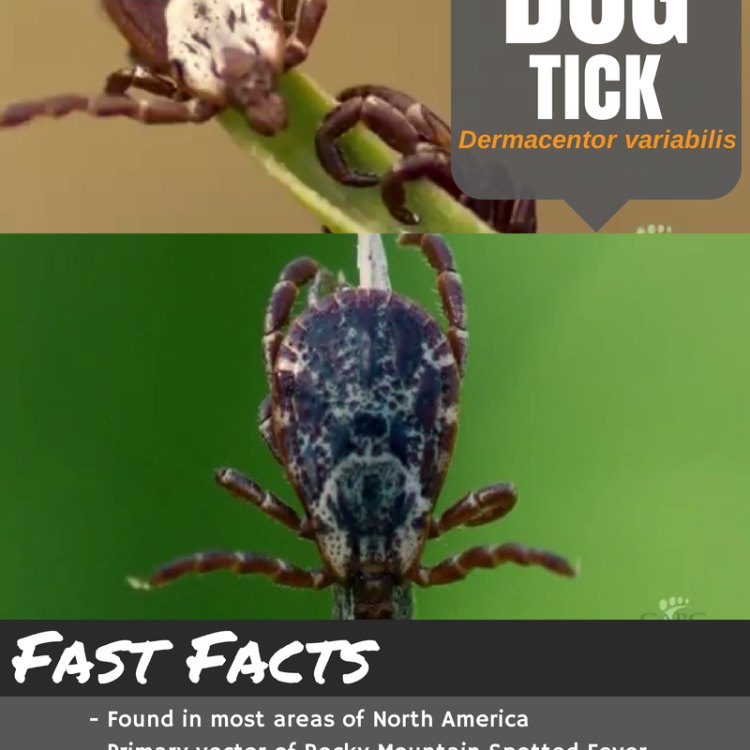
The Amazing American Dog Tick: A Common But Noteworthy Parasitic Arachnid
Disclaimer: The content provided is for informational purposes only. We cannot guarantee the accuracy of the information on this page 100%. All information provided here may change without prior notice.

